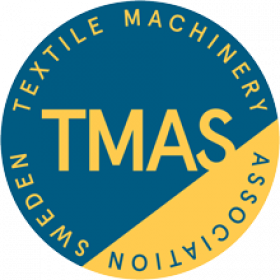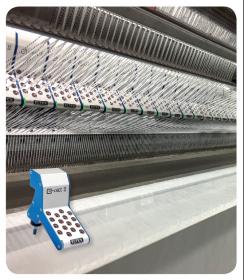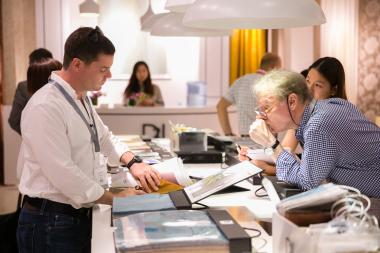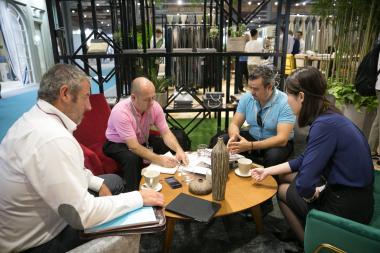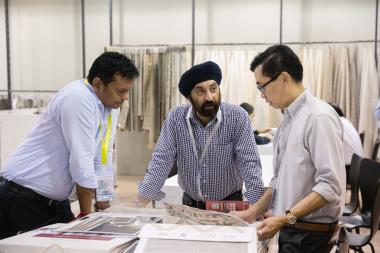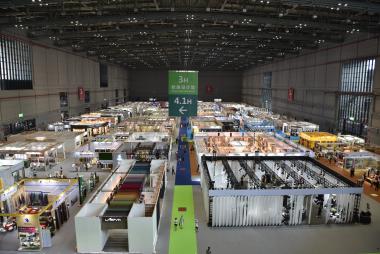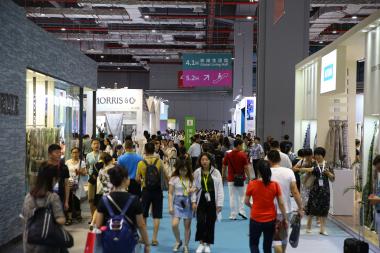VIATT 2024’s prospects highlighted at Intertextile Apparel press conference
Harnessing the synergy of the Texpertise Network of Messe Frankfurt and its global apparel flagship, the co-organisers of the Vietnam International Trade Fair for Apparel, Textiles and Textile Technologies (VIATT) recently held a joint press conference on 28 August 2023, the first day of Intertextile Shanghai Apparel Fabrics – Autumn Edition. Discussing the inaugural fair’s comprehensive, business-friendly nature, representatives of both Messe Frankfurt and VIETRADE spoke in glowing terms about the potential of ASEAN’s new platform for the entire textile industry. Set to launch the spring sourcing season, the fair will take place from 28 February – 1 March 2024 at the Saigon Exhibition and Convention Center (SECC), Ho Chi Minh City.
For its first edition, the fair is expected to attract over 500 exhibitors and around 35,000 visitors to an 18,000 sqm exhibition space. Ms Wendy Wen, Managing Director of Messe Frankfurt (HK) Ltd, considered the show’s importance on a worldwide scale: “Serving as a supplementary trade fair to our existing events in China, VIATT will effectively extend our market reach into South East Asia. We’ve designed it to reinforce our global Texpertise Network, spanning the entire textile value chain. The network, which links over half a million textile professionals globally and organises more than 50 international textile trade fairs across 11 different countries, will lend its full support to the fair.”
She continued: “In line with this commitment, we will harness our more than 30 years of experience organising Intertextile in China, and extend to the fast-growing textile sector in Vietnam. Intertexile has grown to be by far the most influential series within our Texpertise Network, covering a broad range of resources in apparel fabrics, home and contract textiles."
With Vietnam’s largest international airport and seaport, and its proximity to other textile producing countries and regions, Ho Chi Minh City is strategically located to hold an event of this nature. The city attracts 35%[1] of Vietnam’s foreign direct investment projects, and is the venue of choice for a significant portion of the country’s trade fairs.
Discussing the event’s potential, Mr Vu Ba Phu, Director General of Vietnam Trade Promotion Agency (VIETRADE), said: “Vietnam has emerged as one of the leading textiles exporting countries worldwide, with particularly high growth in the past 10 years, ranging from 15% to 20% yearly. As companies seek to diversify supply chains, and Vietnam introduces lucrative trade agreements, the market is predicted to attract even more investments. A big importer of textile machinery, fabrics, and yarns and fibres, green production and durable goods have become increasingly important. VIATT 2024 will be an important hub helping suppliers and buyers in all categories to meet, source and unleash the full potential of this market.”
A comprehensive Vietnam-based textile fair is an attractive proposition for manufacturers and sourcing professionals alike. Exhibitors from around the world will showcase a full spectrum of apparel fabrics, yarns and fibres, and garments; the latest innovations in technical textiles and nonwovens, textile processing, and printing technology; as well as a wide range of home and contract textiles.
Apparel fabrics, yarns and fibres, and garments
This sector will contain quality exhibitors from Vietnam, ASEAN, and beyond, providing buyers with numerous, diverse sourcing options in apparel textile sub-categories such as accessories, casualwear, denim, lace and embroidery, ladieswear, pattern designs, shirting, sportswear, suiting, and many more.
Technical textiles and nonwovens, textile processing, and printing technology
With application areas that include everything from automotive, aerospace and shipping, to construction, healthcare and safety, products on display will include innovative machinery, as well as some of the latest developments in smart textiles, such as wearable technology, sensors, and advanced materials.
Home textiles
Exhibitors will feature high-quality bed linens, towels, curtains, and much more, suitable for visitors sourcing for both residential and commercial applications. The diverse collections of home textiles will be enhanced by globally on-trend interior designs and in-demand, organic materials.
The Vietnam International Trade Fair for Apparel, Textiles and Textile Technologies (VIATT) is organised by Messe Frankfurt (HK) Ltd and the Vietnam Trade Promotion Agency (VIETRADE). Covering the entire textile industry value chain, the inaugural edition will be held from 28 February – 1 March 2024 at the Saigon Exhibition and Convention Center (SECC), Ho Chi Minh City.
[1] ‘Investing in Ho Chi Minh City’, October 2022, Vietnam Briefing, retrieved August 2023, https://www.vietnam-briefing.com/news/investing-in-ho-chi-minh-city-why-the-megacitys-industry-economy-and-policy-are-key-to-developmen.html/
Messe Frankfurt (HK) Ltd











